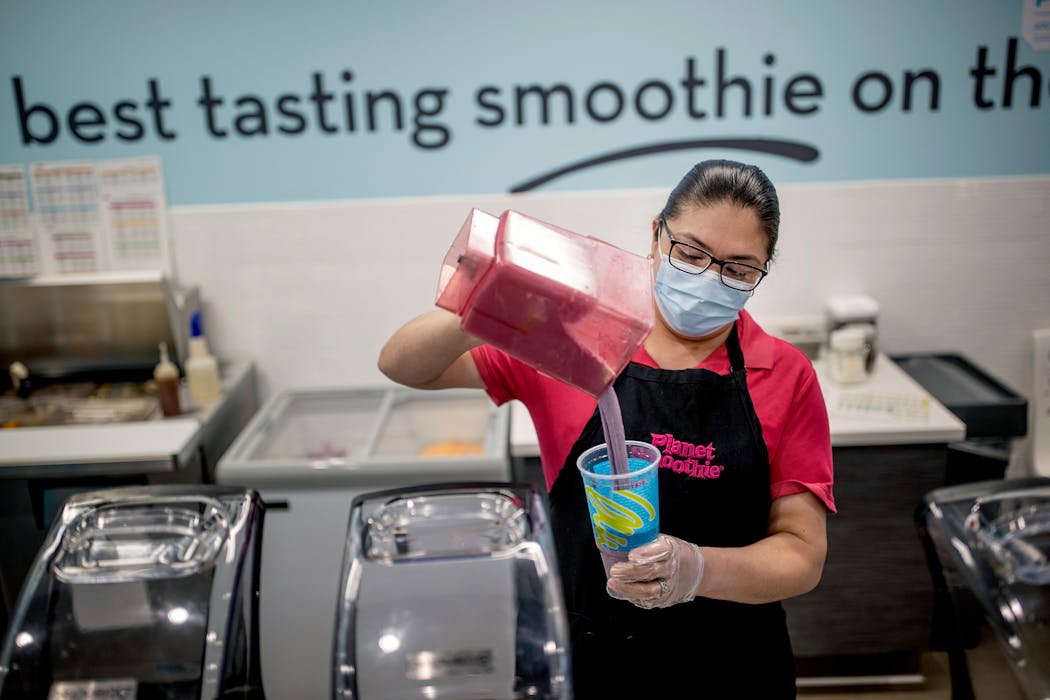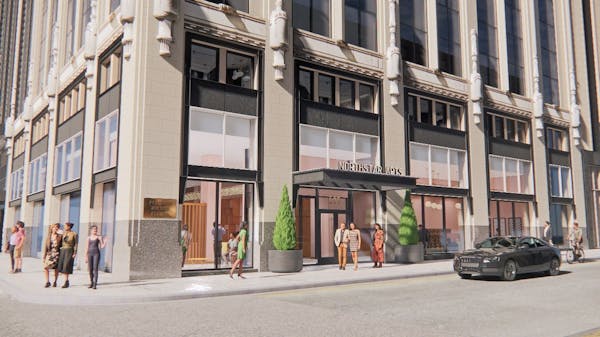Elise Houndjo is a welcoming face of a slowly reviving downtown Minneapolis as she happily directs travelers to skyway destinations and listens empathetically to distressed souls.
"I love people," said Houndjo, recently named Ambassador of the Year by the Downtown Improvement District. "That's my thing."
Downtown ambassadors guide, garden and clean. They also alert private security, police or social services to threatening situations.
Houndjo, recently promoted to lead a six-member team that focuses specifically on the skyway system, has worked eight years as an ambassador.
"With homeless people, we listen and call our 'livability team' to escort them," she said. "Sometimes people just need to hear somebody cares. I always believe God is watching."
Houndjo, 55, is a West African immigrant who followed her engineer husband to Minnesota for economic opportunity. One of her sons is in college and the other also is an engineer.
"I recently encountered a man who was so down. He had lost his job and family. He was talking about giving up on life," she said. "We talked. I saw him again a couple of weeks ago and he thanked me. He's doing better. He's back with his family."
Ambassadors, who earn $18 an hour plus benefits after six months' probation, walk miles daily on icy streets and skyways to serve downtown employees and guests. The 60 ambassador positions are funded by the Downtown Improvement District, which collects an assessment on top of property taxes.
LaVelle Warfield, general manager of the Improvement District, said Houndjo is "one of our most loyal and dependable staff members and consistently praised by people she helps in our downtown community."
Ambassadors, police, civilian crime prevention teams and other citizens have welcomed the growing ranks of workers returning as well as fans of downtown's arts, sports and dining scenes.
They also, since last year, have helped drive down crime from aberrational 2020-21 levels.
That's a good thing as downtown slowly fills up again.
Nearly 65% of downtown employees have returned to work at least part time, a 56% increase from a year ago, attendees learned at this month's annual meeting of the Minneapolis Downtown Council. A year ago, fewer than half had returned.
Downtown's residential population has risen by 10% to 56,748 since 2020. And there was $1.9 billion in new construction last year in Minneapolis, the 11th year of more than $1 billon worth of building permits approved. About half of last year's construction was downtown.
Downtown hotels, restaurants and small retailers are recovering from the COVID economic downturn. However, most of the retail growth is in the booming North Loop district. The Nicollet Mall has declined since the 1980s as a shopping district.
Downtown Council CEO Steve Cramer and others lament vacant storefronts on the mall and tout the need to reinvent it as a small-business and boutique center. There is slow progress, including Chameleon Shoppes boutiques, Dayton's Project and resurrected restaurants.
Commercial real estate values plummeted during the building-emptying pandemic. The huge Hilton Hotel that serves the Minneapolis Convention Center and may be sold, is doing better. At least two or three loop office towers are for sale at steep discounts.
Office buildings, such as the 60-year-old Northstar Center, are being refurbished. Antiquated Rand Tower and Soo Line were reconditioned into a boutique hotel and apartments, respectively.
Downtown has evolved into more of a residential, business and nightlife hub and less a retail center over the past 35 years.
Target remains the largest employer at 7,100 workers, down from 8,500 a couple of years ago, according to the council. Target has vacated considerable downtown space as it moved to a hybrid work model. And some jobs went to suburban locations.
Ameriprise Financial also has shrunk, to 4,501 employees from 5,000-plus, because of hybrid work and planned office consolidation.
Minneapolis still reigns as the single-biggest financial engine and state cash cow.
The city, including its downtown that pays a disproportionate share of Minneapolis real estate and other taxes, sends $3.50 to state coffers for every $1 in state aid, according to an independent study by the Minneapolis Regional Chamber of Commerce in 2021. The chamber represents businesses from Plymouth to Eden Prairie.
The retail sector is the weakest link in a transitioning loop. A downtown task force is on it.
"I'm convinced that with planning and action we can create a retail future for the core that draws upon unique offerings by local entrepreneurs," Cramer said recently. "It's not the retail past. And this future will also require a broader set of allowable storefront [zoning] uses that contribute to downtown's vitality."
Meanwhile, Maricela Gallarzo, who worked seven days weekly since 2020 to keep her Planet Smoothie franchise alive in Gaviidae Common on Nicollet Mall, said business continues to improve as office workers return, supplementing loyal residential fans.
"We are at 60 to 65 percent of where we need to be," she said. "We're seeing more [office-worker] traffic, especially Tuesday, Wednesday and Thursday. We hope to be crazy busy by summer."
New York City turns to AI-powered scanners in push to keep guns out of the subway system
North Carolina regulators says nonprofit run by lieutenant governor's wife owes the state $132K




